This article was among Farmers Weekly’s most read in 2022.
As a child a Taranaki farmer discovered a passion for the Ayrshire, though his father had a predominately Jersey herd. That passion never waned and eventually led to him starting the Sanrosa Ayrshire stud more than 40 years ago.
Gordon Glentworth, his partner Bethany and son Jonathan milk 270-275 cows on 120 hectares at Riverlea. The stud was established in 1977 and Glentworth is a two-time president of Ayrshire New Zealand and has chaired its marketing arm, Semayr Breeding Services, for more than 20 years. He is a senior judge and traits other than production (TOP) Inspector.
Gordon grew up on the family farm and spent a year at Flock House after leaving school. He then spent a year at Shell, BP and Todd before returning to the farm to do the work he loved.
He also milks 25 Friesian cows as a direct comparison to his Ayrshires. They are bred to the best genetics and farmed in exactly the same conditions. He also milks four Jerseys “just for something a little different”.
“When I was a kid I used to fill out my dad’s AI book. You wrote down A, J or F for the bull breed. Some days I’d put an ‘A’ down instead of ‘J’ for the breed of sire. So we ended up with some half Jersey, half Ayrshire calves,” Gordon says.
“My dad didn’t seem to mind. When he began herd testing he discovered that they were the top producing cows. With that hybrid vigour, they should have been too. Dad then began using more Ayrshire genetics.”
Finland has the largest progeny-tested Ayrshire population where it’s their most populous breed, but in New Zealand it only makes up .5% of the national dairy herd. The use of Finnish genetics has enabled his herd to gain approximately 100kg MS per cow. They are now producing over 1kg MS/kg of bodyweight.
His is a top herd.
In the 2020-21 season the Sanrosa Ayrshire herd averaged 8707 litres of milk, 376 kilograms of fat and 325kg protein (701kg MS) in 295 days from 215 cows. This record smashed the previous breed record of 639kg MS from the same herd in the preceding season and is the third season in a row the herd has produced a new breed record.
This record will see them receive the Mayfield Trophy for NZ’s top-producing Ayrshire herd 23 times since the 1986-87 season.
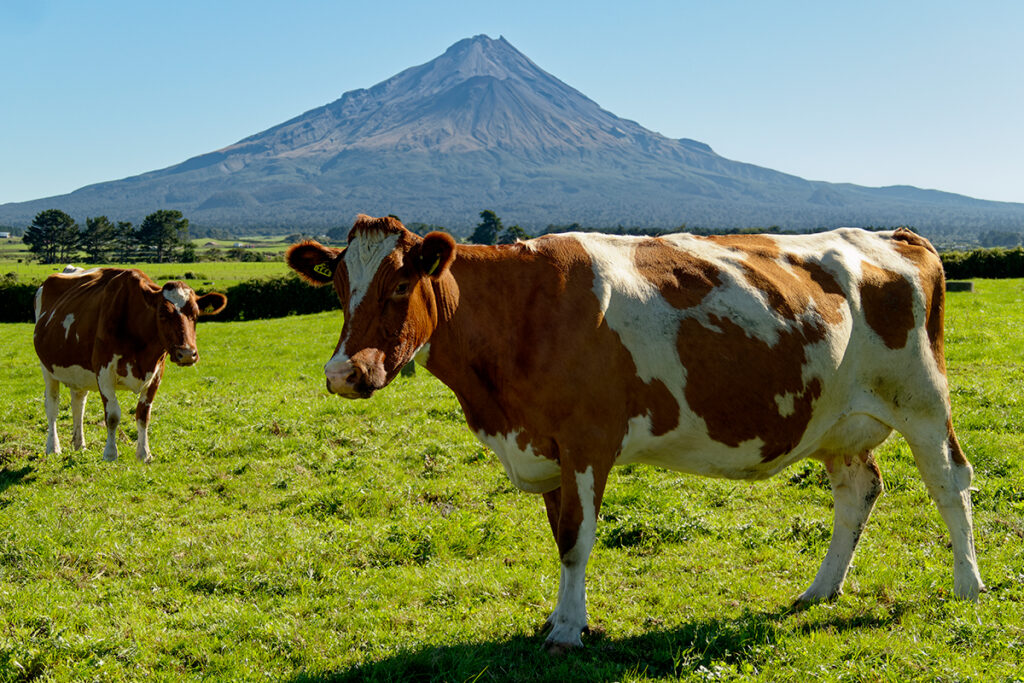
During February/March they began considering whether they could break their record. Initially they didn’t think it was possible because they hadn’t targeted it. But it had been such a good season they began to reconsider. They decided that if they pushed everything a little more they might accomplish their goal.
“We didn’t know whether we’d reach our target until the very end of the season. A great deal of the jump from 639kg MS to 701kg MS was due to it being a good season and having plenty of grass when needed,” Jonathan says.
“You don’t realise how much production you lose when it gets dry. You can get away with it a bit earlier in the season, but you never regain that production if it gets dry late in the season when the cows are in-calf.”
The herd receives a mineral supplement through the in-shed feed and is fed 1.2kg per milking of 40% DDG; the remainder consists of wheat bran, pellets and little soya hull in-shed per milking. Whatever mix they start the season with, is what they finish it with – they don’t usually alter quantities. But in March Fonterra announced an even higher milk price and the amount was upped to 1.5kg.
Gordon says Ayrshires aren’t too fussy on grass quality and believes you can get away with a little bit more with them than other breeds. He’s sometimes been told that his pasture is too rank and it’s costing him production.
“I don’t feel that it does. Sure you can go too far, but I think our Ayrshires give us a wider opening before pasture quality affects production. We normally top the entire farm twice a year and have only twice topped it three times,” Jonathan says.
“This helps from an environmental aspect, but as you lower your stocking rate, your cows get bigger. During autumn I think our cows would average around 550kg. To be efficient they must average 550kg MS each. If you have 400kg cows doing 400kgs MS, then you need 40% more on the farm,” Gordon adds.
He feels that farmers expect a lot from young cows.
“Thirty years ago when a two-year-old came in she looked like a two-year-old. She grew and did some production too. Now we want our two-year-olds to come in and do over 500kg MS, and it’s a big ask of them,” he says.
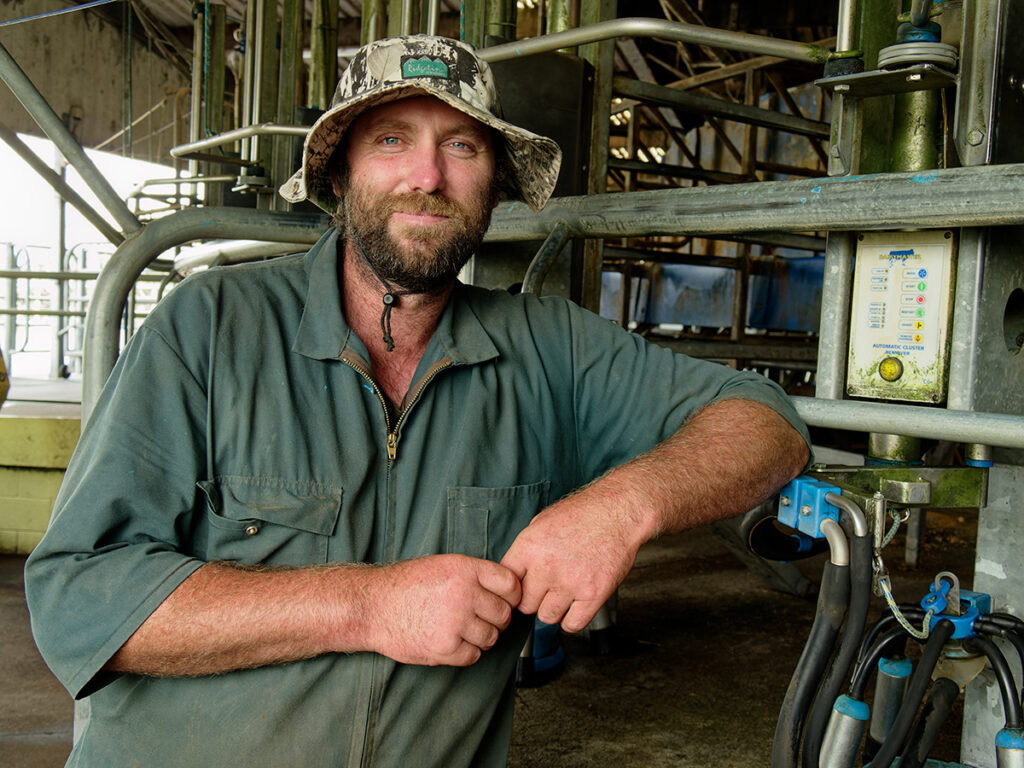
They no longer grow summer crops or maize to keep it simple.
“We used to make around 450 bales of silage. After three dry seasons in a row, and needing some to feed in summer, we bumped it up to 650 bales,” Jonathan says.
Last season was so good that they came out of winter with 230 leftover bales. They buy 260 large square bales of hay from Manawatū.
When a paddock is closed for silage they’ve usually only just reached it and missed it in the round, so it already has three weeks growth. If they can see a surplus they take those paddocks out in front of the cows rather than behind them.
“I’m not good at seeing surpluses because we usually have a large surplus anyway. We try to push as much through the cows as we can during the peak time. Last season the cows peaked at just over 35 litres a day, which is huge compared to what we used to do,” Gordon says.
“I can remember my father saying that very good cows produce 18-20 litres per day. Now we have heifers producing well over 30 litres per day, and our top cows are doing around 50.”
All silage is harvested by January. With no hay to harvest or summer crop of maize to grow, the farm goes into summer with all paddocks in rotation. The farm’s lower stocking rate eliminates the need for summer crops and the silage covers any dry spell.
“This year our thinking was to cut back on silage. The intention was there, but the execution wasn’t so good. We bought eight extra cows with the intention of closing two fewer paddocks. With those two paddocks in the round, which is only a day on our 12-hour rotation, we thought we’d cover it with the extra cows,” Jonathan says.
“But the grass grew so well it hasn’t made much difference. I told our contractor that he needs to tighten his bales up so we can get more in them. Some people dislike two-year-old silage, but we’ve used it and had no problems with it.”
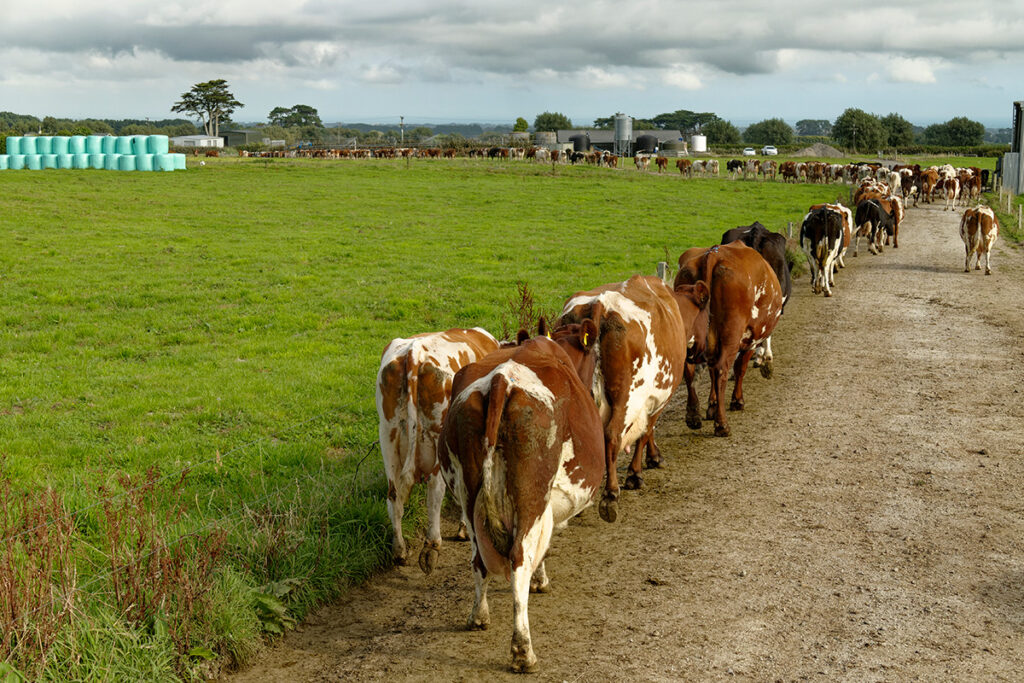
Calving starts around August 8 and they keep 50-60 replacements which are fed twice-a-day for 100 days and receive eight to nine litres of milk each per day. For the first month only fresh colostrum is fed, never stored colostrum.
During the last two years some milk powder has been used when they get short of milk. The calves are started on meal at one-month-old and aren’t weaned until they’re 12 weeks old. Any that look a bit small are held back.
“We try to keep everything on the farm simple as possible without any over-complication,” he says.
The farm always has a good run of heifer calves. A couple of years ago they had 85 and thought of it as a bad year. The herd is at a stage now where they’re happy to keep a calf from any cow.
“We keep every heifer calf if it’s from an Ayrshire bull, which gives us far too many. This year we had 100 heifer calves and sold the extra calves at our on-farm sale. The sale of those premium calves is a welcome boost of income,” Gordon says.
In that sale, 60 weaner calves were paired into 30 lots. The winning bidder of each group kept one calf and they kept the other.
The line of calves was so even that Gordon didn’t know which calves to keep or sell, so was more than happy to take the calf that the buyers didn’t select. The sale averaged just under $1700 each and was held before the official announcement of the record herd production figures.
People tend to buy their Ayrshire bull calves for harder country, where they fossick better than most breeds. Some bull calves are sold for service bulls or for future use in the AI industry.
“If you have a crossbred herd and use short-gestation Angus bulls, you must be very careful identifying the genetics of your last bull calves.” Jonathan says.
“Using Ayrshire bulls throughout eliminates any guesswork when you sell them for the beef market. I think our bull calves grow into a bigger framed animal due to their Scandinavian genetics.”
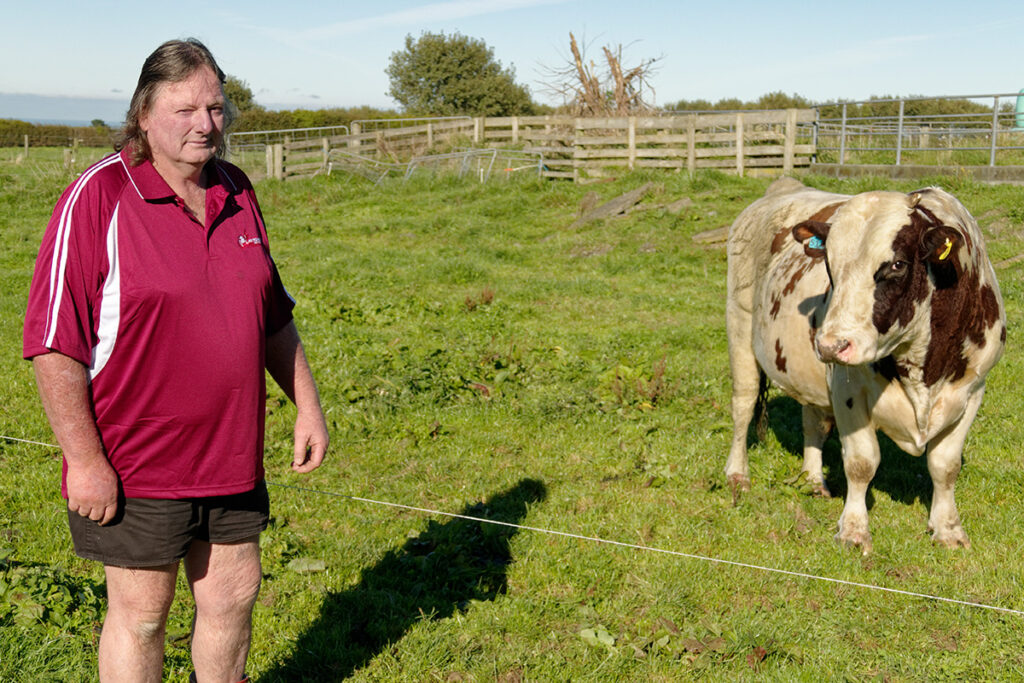
Mating begins on October 28 and continues until early January, lasting for eight weeks. No CIDRs or vet interventions are used.
“We just take it as they come,” Gordon says.
One year they did achieve a 90% submission rate and the following spring was their worst ever.
“It was a very wet and cold spring though. We just couldn’t feed them properly and did our lowest production for many years,” Jonathan says.
Jonathan is a LIC technician and one farm on his run now begins mating on October 31, which is considerably longer than it used to be. Some farms use short-gestation bulls through to January 20.
AI is used for eight weeks and the herd is usually tailed with Ayrshire bulls. Last season they only used one bull for the task. Jonathan’s AI kit is at home so if a bull becomes lame, he can quickly revert to AI.
“If you don’t have a technician, you need more bull power. Short-gestation bulls are a big help and we used them for the first time last year. It allows you to mate a bit longer. Some of the short-gestation cows calve before our last Ayrshires,” he says.
“If you only use AI for three weeks you need a lot of bulls. A longer AI period ensures that when you’re finished you’re probably only getting one or two cows a day for the bull to mate.”
The heifers are grazed off-farm and mated to Jersey bulls for calving ease. Mating starts on the same day for the herd and heifers.
Gordon’s goal has always been to breed his herd to produce well and to have a high standard of conformation. Being a TOP assessor helps him evaluate his herd.
He doesn’t focus on the amount of milksolids the herd produces over the season. And he doesn’t know what last year’s production was. If someone asked him what his top cows produce, he couldn’t tell them. But he intensely watches the bottom ones.
“The top cows take care of themselves,” Gordon says.
“I use what I consider to be the best New Zealand and international genetics. Even though the international genetics conversions may not rank well, you need to compare them from their country of origin.
“Genetics is a numbers game. The country you source your genetics from must have a greater population than your own, otherwise the chances of them being better are very slim and you regress.”
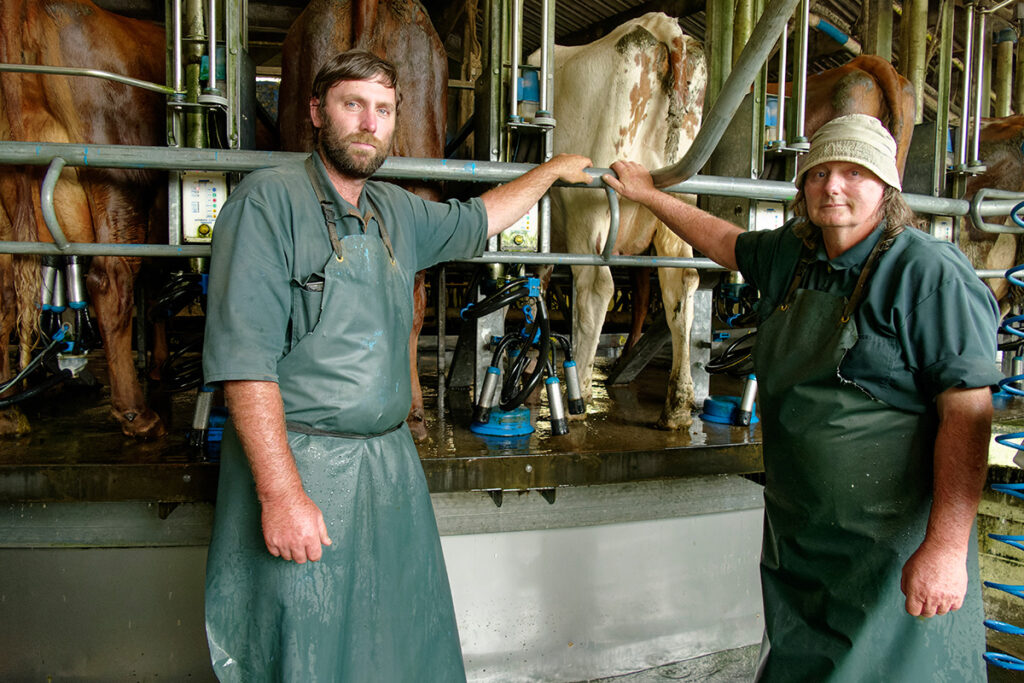
Scandinavia’s large Ayrshire population is the reason they source genetics from that region, including many Finnish bulls.
For this season’s mating he’s used a top bull called IWA Super Sonic. That bull has been used over half of the herd, the rest were mated to a complete outcross of a Scandinavian bull called Vimo.
“We put every unrelated cow to the New Zealand bull and the rest to the Scandinavian bull. It’s easier to keep it ‘clean’ when you do that, rather than bits and pieces from multiple bulls,” he says.
Gordon prefers to produce lines of animals. He often uses 150-200 straws from one bull to provide a large run of daughters and prevent inbreeding.
He uses a selection of NZ’s best ranked bulls. One bull that has done well is one that he bred, Sanrosa Deacon. Gordon puts great emphasis on the breeding values of fat and protein. Deacon for example rates 28 for fat and 27 for protein, and his maternal brother Dalton sits at 28 for protein and 17 for fat. Both bulls are a2/a2.
“I like to look at lines of animals because you can see consistent traits coming through the offspring. If you use a number of bulls and only get two or three daughters from a bull, it doesn’t tell you anything about it,” he says.
“You might be lucky and get two good animals. But you can easily get two poorer ones even though it’s a good bull. If you use a good bull over a large number of cows, you’ll get many good offspring and be able to pick the best of the best for replacements.”
All of his animals are DNA tested to sire and dam. If any culling is required they look at the cows in the older age group. They haven’t had to cull a young cow for several seasons.
“Our two-year-olds average over 500kg MS. If one comes in producing 420-430kg MS, she’s still no slouch. She may have just calved a little later. I’ve found that as production goes up, lifespan comes down,” he says.
He enjoys the bull selection process and has often travelled overseas to view bulls. His aim is to pick a bull that is consistent on all traits. He’s discovered that if he breeds for individual traits, he might improve that particular trait, but others begin to slip.
“Our first trait is production. The second trait is a standard of conformation that will handle that production and be better than the average animal,” he says.
“If you only use one or two bulls you have a large selection of calves to pick from. If you have 20-25 calves from one bull you can bet your boots that their average conformation will be the same as the bull’s average proof.”
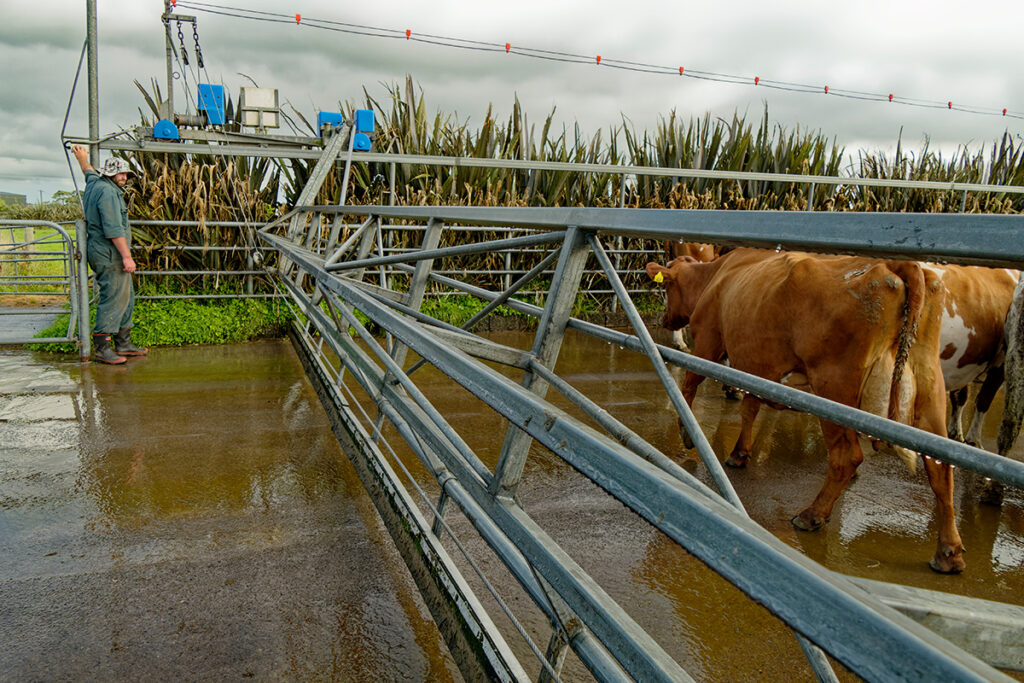
They use Scandinavian bulls that are positive in every trait and believe they couldn’t have achieved their current production without those genetics. Before genomics were implemented, Finland alone proved 110-120 Ayrshire bulls per year, which is similar to the number of Friesian bulls proven annually in NZ.
“Their one-year gain would take us several years. Here the AI companies prove the most popular breeds and the Ayrshire has never been that popular. The AI companies have to make a profit and you can’t argue against that,” he says
He doesn’t worry about his six-week in-calf rate, he just takes what comes. Their last season of an 88% in-calf rate is higher than the district average and required no intervention.
“We were always the last to start mating around here. But after a few bad springs, some farms are now starting later too. I don’t get excited about a ‘90% submission rate’. Some years we have almost as many cows calved in the second round as the first,” he says.
“It doesn’t worry me in the slightest because the cows are fully fed. If you do get that spring pinch, you won’t have to hold their feed intake back for so long.
“The longer the feed pinch, the greater effect it has on your peak production. It mightn’t be much, but if you take out that peak, you lose all the way.”
“I’m a bit different from other farmers in that I don’t really worry if a two-year-old ends up empty if she’s had a good season. You don’t want the whole lot like that, but I don’t mind holding them over. When they come back they’re mature and good for many years.”
Ayrshires remain an interest for Gordon and he can vividly remember when his family got their first Ayrshire cow.
“I don’t know what inspired me to like them. It’s a personal preference that I can’t really put my finger on. Recently my mother gave me my childhood scrapbook. It’s full of cow pictures that I’d clipped from the Straight Furrow’s back pages. There were all sorts of cattle in it, even beef animals,” he says.
He enjoys the challenge of farming a minor breed and has considered throwing in the towel and toyed with the idea of going with a mainstream breed.
“We’d probably do just as well. But my interest wouldn’t be there,” he says.
“The farm’s now on the market and Jonathan would like to try another style of farming. I’m nearly 67 and everything I do is a bit slower and more painful and I’m beginning to think it’s about time for a bit of a change. Though I’m not sure what I’ll do afterwards,” he says.
Farm Facts
Owners: Gordon Glentworth
Farm assistant: Jonathan Glentworth
Location: Riverlea, South Taranaki
Farm size: 120 hectares
Cows: 270-275 pedigree Ayrshires, 25 Friesian cows, 4 Jersey
Production 2020-21: 150,715kg MS from 215 cows
This article first appeared in the May 2022 issue of Dairy Farmer.










